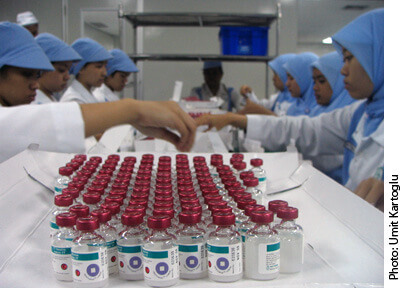Claire WingfieldPATH
Claire Wingfield is a Product Development Policy Officer within the Advocacy and Public Policy Department at PATH, a global nonprofit dedicated to ending health inequity.
In this guest post, Claire Wingfield—product development policy officer at PATH—writes about a new paper she developed for the GHTC that outlines key regulatory challenges encountered by nonprofit product developers.
The regulatory landscape for health products targeting the needs of low- and middle-income countries encompasses many stakeholders, mechanisms, and levels of oversight on the global, regional, and national levels. And at every step of the product development process there are regulatory milestones to be met, no matter the type of health technology, the health condition being addressed, or the geography. Subsequently, developers often engage a number of regulatory stakeholders throughout a product’s lifecycle, and encounter any number of challenges along the way.
Costs for product developers and manufacturers to comply with regulatory requirements are a large—and growing—component of research and development (R&D) expenditures, and regulatory challenges can delay timely access to technologies for patients. Despite this, until recently policymakers and donors have paid little attention to regulatory reform in discussions on improving financing and coordination of global health R&D. The GHTC has launched a paper outlining the most significant challenges that nonprofit product developers (NPPDs) and partners encounter throughout the R&D continuum to demonstrate how regulatory challenges impede their ability to accelerate R&D and increase the costs of product development.

Regulatory processes and obstacles can vary widely by product platform, as well as geography. However, representatives from all of the NPPDs contributing to the paper agreed on three thematic challenges that increase the costs of product development, cause delays in product introduction, complicate an already difficult process, and—ultimately—can result in fewer lives saved:
Competing and misaligned requirements across regulatory authorities in high-, middle-, and low-income countries have created a confusing landscape for NPPDs. Because of the complexity of the regulatory environment, many NPPDs and partners face unclear signals about which regulatory body to approach first, what the requirements are for each review, and when these reviews can take place.
Unfortunately, because many national regulatory authorities in low- and middle-income countries are often poorly funded, understaffed, and overburdened, they lack the resources to provide adequate guidance to developers, as well as proper oversight over many of the products being studied, introduced, and used in their countries. This lack of capacity and resources can be a significant hurdle and lead to considerable, costly delays in product development and introduction, and could mean reduced protection for patients.
As their innovation pipelines grow, NPPDs are taking over more aspects of product development programs and recognizing the need to work more directly with regulators. Based on their experiences in navigating the regulatory pathways of health products to address poverty-related and neglected diseases, respondents had some recommendations to strengthen regulatory processes:
Increased development of health products targeting the health needs of low- and middle-income countries is highlighting the need for stronger regulatory systems and increased collaboration among stakeholders—including developers, manufacturers, regulators, and policymakers—to ensure that the innovation pipeline is filled with technologies that are being developed to maximize health impact.